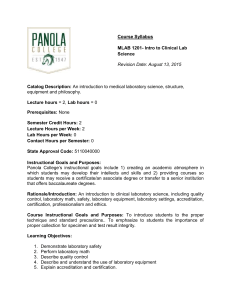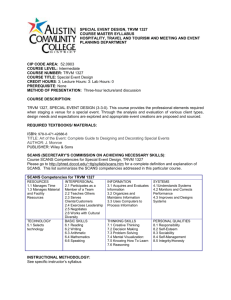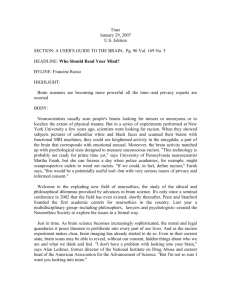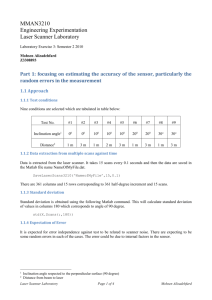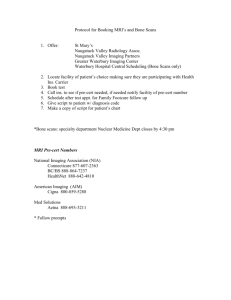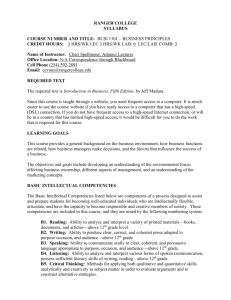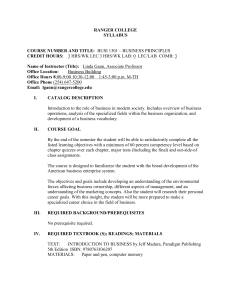Chemistry Lab
advertisement
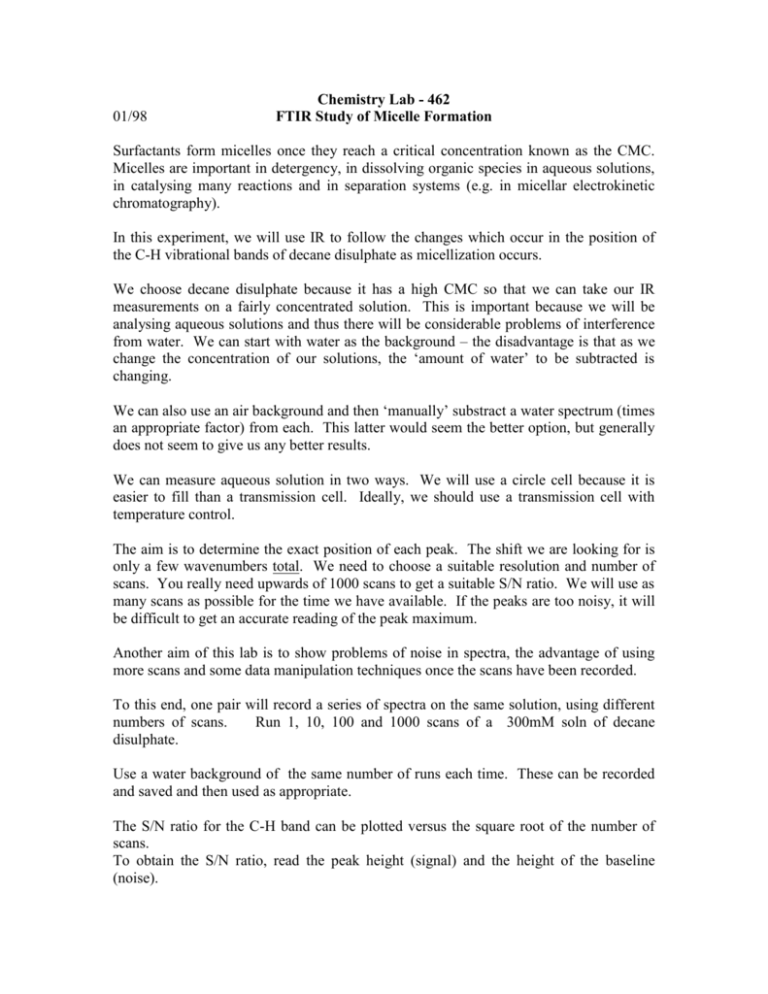
01/98 Chemistry Lab - 462 FTIR Study of Micelle Formation Surfactants form micelles once they reach a critical concentration known as the CMC. Micelles are important in detergency, in dissolving organic species in aqueous solutions, in catalysing many reactions and in separation systems (e.g. in micellar electrokinetic chromatography). In this experiment, we will use IR to follow the changes which occur in the position of the C-H vibrational bands of decane disulphate as micellization occurs. We choose decane disulphate because it has a high CMC so that we can take our IR measurements on a fairly concentrated solution. This is important because we will be analysing aqueous solutions and thus there will be considerable problems of interference from water. We can start with water as the background – the disadvantage is that as we change the concentration of our solutions, the ‘amount of water’ to be subtracted is changing. We can also use an air background and then ‘manually’ substract a water spectrum (times an appropriate factor) from each. This latter would seem the better option, but generally does not seem to give us any better results. We can measure aqueous solution in two ways. We will use a circle cell because it is easier to fill than a transmission cell. Ideally, we should use a transmission cell with temperature control. The aim is to determine the exact position of each peak. The shift we are looking for is only a few wavenumbers total. We need to choose a suitable resolution and number of scans. You really need upwards of 1000 scans to get a suitable S/N ratio. We will use as many scans as possible for the time we have available. If the peaks are too noisy, it will be difficult to get an accurate reading of the peak maximum. Another aim of this lab is to show problems of noise in spectra, the advantage of using more scans and some data manipulation techniques once the scans have been recorded. To this end, one pair will record a series of spectra on the same solution, using different numbers of scans. Run 1, 10, 100 and 1000 scans of a 300mM soln of decane disulphate. Use a water background of the same number of runs each time. These can be recorded and saved and then used as appropriate. The S/N ratio for the C-H band can be plotted versus the square root of the number of scans. To obtain the S/N ratio, read the peak height (signal) and the height of the baseline (noise). 2 To read the noise, you will probably need to expand the baseline signal. Attempt this, but discuss exactly how to do this with me before finalizing your readings. Then, using 100 scans, you can compare the effect of running the spectra at various resolutions. Another pair should run a series of 5 solutions of different concentrations spanning the CMC. Use a water background and 1000 scans. (Try 100-500mM). Once you have your data, read off the peak maxima for the C-H peaks and plot versus concentration. Also do some smoothing. Smooth by averaging over first 4 then 8 pts. Each time read the peak maxima, then plot versus concentration. Another problem with this experiment is the purity of the decane disulfate. One pair should run a C 13 nmr on a solution of the decane sisulfate in D2O to identify possible impurities. If possible, electropherograms should be run using CE to determine the amount and nature of salt impurities present. In fact, I know that this sample may be quite impure and this may affect the CMC so the range of concs looked at should span the CMC by a large conc range. Your Introduction For your introduction, read the attached paper from Mantsch’s lab. What experimental conditions and set-up did they use? What were the results for the C-H peaks? Why does the C-H band shift as micellisation occur? Write-up Compare data from all pairs. What is the effect on the S/W ratio of increasing the number of scans? What is the effect of changing the resolution? What is the effect of smoothing/signal averaging? - How does it change your results? - What is the effect of averaging over different numbers of points? What was the purity of the sample and how does this change the concentrations we have used above? 3 How did the C-H vibration positions change as micellization occurred? Was this as suggested by Mantsch? What could be done to improve the reliability of our results?

